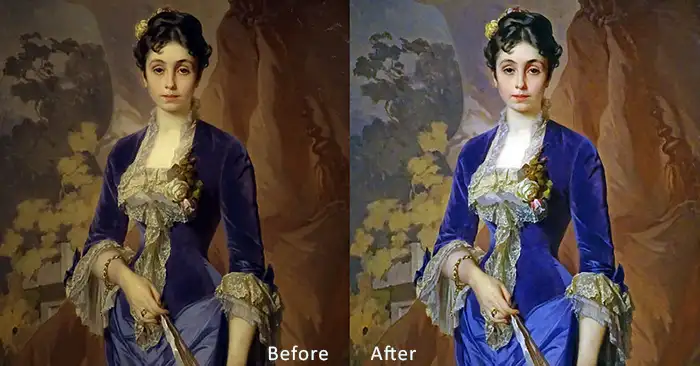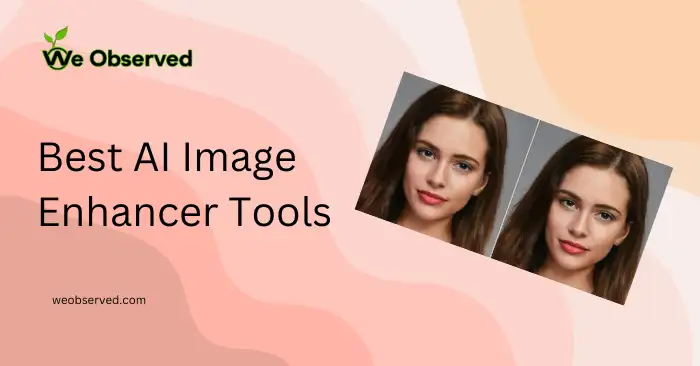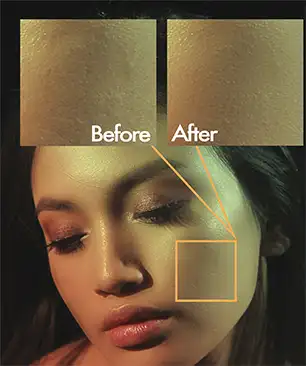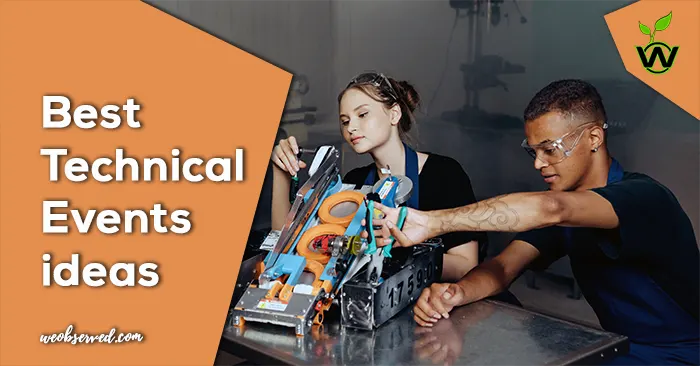Pictures play a crucial role in conveying information, stories, and how we see things. But not every picture looks great. Some are clear and sharp, but others might be blurry, grainy, or not very colorful. That’s where AI image enhancer tools step in to help.
AI image enhancer tools are platforms or computer programs that use Artificial intelligence and Machine Learning to make pictures look better. They can make blurry pictures clearer, get rid of annoying grainy bits, make colors brighter, and even make a small picture bigger and clearer, turning a “meh” picture into a nice one.
These tools are very important, especially for professionals working in fields like photography, graphic design, and digital marketing. They’re really helpful because they save a lot of time and effort. Instead of spending ages fixing pictures by hand, these tools do it quickly and make sure the quality stays good.
Also check:Best Video Editors with AI Features : Making Editing easier
Also, people who aren’t professionals can use these tools too. Since lots of people use social media and create digital stuff, these tools can be handy for making pictures look awesome. Whether you want to post a great photo on Instagram or fix up old family photos, AI image enhancer tools can make your pictures look really good.
Next, we’ll dig into AI image improvement tools, checking out the best tools out there and giving tips on picking the right one for you. Whether you’re a pro or just starting, this article will help you understand how to use AI to make your pictures better.
Understanding AI Image Enhancement

AI image enhancement is like a special part of computer vision that works on making pictures better using Artificial Intelligence and Machine Learning tricks. The aim is to turn average or bad-looking pictures into really nice ones, which can be used for lots of things like ads online, social media posts, and professional photography.
Making pictures better with AI has a few steps. First, the AI looks at the picture to see what’s wrong with it, like if it’s blurry, noisy, low lighting, or lacking detail. Then, it uses Artificial Intelligence and Machine Learning algorithms and goes through vast amounts of data to learn from a bunch of other pictures to figure out how to fix these issues and make the picture look better.
Must Check: 10 Best AI Video Generators: Choose the Best for Your Business
After the AI figures out what’s wrong with the picture, it uses special enhancement techniques to make it better. These tricks can make the picture sharper, get rid of noise, make colors nicer, adjust contrast, and even make the picture bigger. The AI does all of this carefully to make sure the final picture looks real and natural.
Making pictures better with AI is based on learning from lots of pictures. These AI models look at many good pictures and learn to recognize patterns and features that make them good. Then, they use this knowledge to fix up low-quality images, kind of like teaching themselves how to make pictures better.
One important thing is using convolutional neural networks (CNNs), a type of deep learning model, which is good at looking at pictures. They can find all the small details and patterns in a picture, which makes them perfect for tasks like making pictures better.
Using AI image enhancement tools to make pictures better is helpful. By knowing how it works, we can understand how awesome it is and what we can use it for
Evolution of AI Image Enhancer Tools
The story of AI image enhancer tools has been really interesting, with lots of new ideas and big improvements along the way. Let’s go back in time and see how these tools have changed and gotten better over the years.
The Early Days
The journey of AI image enhancement started back in the 1960s when people began using AI and Machine learning. They created the naive Bayes classifier, one of the first working machine-learning models. But making pictures with AI was harder than making text because pictures have lots of details.
The earliest models that worked for pictures were called autoregressive. They made each pixel by looking at the pixels around it. Models like PixelCNN and PixelRNN were really good when they came out in 2016, but they took too long to make big, clear pictures.
Also read: Accuracy of AI detector Tools: 3 Best Tools, 4 Tests, Check Results
Breakthroughs and Advancements
Between 2017 and 2018, scientists at NVIDIA made big improvements. They focused on something called generative adversarial networks (GANs). Their ProGAN model was the first to make high-definition images, like human faces with up to 1024×1024 pixels. This was a huge step forward and led to even better tools.
After that, the same group began developing the StyleGAN family of models. These models let you combine different features of different images. This created new ways to make pictures better, allowing for more detailed and subtle improvements.
The Present and Beyond
Nowadays, AI tools that improve pictures are more advanced than ever. They use deep learning and convolutional neural networks to understand how pictures work. This lets them make fancy changes to pictures while keeping them looking natural. Tools like Luminar NEO, Topaz Labs Studio, Movavi Photo Editor, Adobe Photoshop, and others can do lots of things, like making blurry pictures clear and making colors pop.
Moreover, the evolution of these tools is far from over. With advancements in AI and machine learning, we can expect to see even more sophisticated and powerful image-enhancer tools in the future.
Top AI Image Enhancement Tools in 2024

In the world of image editing, artificial intelligence (AI) has revolutionized the way we edit our photos. Here are the top AI image enhancement tools in 2024, each with its unique features, pros, and cons.
1. Luminar NEO
Luminar NEO is a high-tech photo editor that improves your pictures using AI. It makes editing photos easier with simple options and customized presets. With features like enhancing lighting, removing objects, sharpening photos, using AI to adjust colors, replacing skies with AI, and removing backgrounds, it offers a lot of AI-powered tools to make your photos look better.
Pros and cons:-
Luminar NEO boasts advanced features tailored for photographers, including wide file support and an integrated stock library. It offers highly customizable shortcuts and seamlessly integrates with other Adobe apps. However, some operations may be slow, and it lacks features like face recognition or keyword tagging.
2. Topaz Labs Studio
Topaz Labs Studio is a powerful image editing tool with advanced features and a user-friendly interface, providing a seamless editing experience. It comes with a variety of advanced photo editing tools and offers multiple filters to enhance your images effortlessly.
Pros and cons:-
Topaz Labs Studio offers advanced photo editing tools and multiple filters, allowing for extensive image enhancement. However, it may not always respond immediately to adjustments and can lag when applying effects.
3. Movavi Photo Editor
Movavi Photo Editor is a user-friendly tool powered by AI, designed to enhance your photos effortlessly. It supports popular graphic formats and offers a variety of useful photo editing filters. Additionally, it provides a wide range of graphic effects across 13 categories, making it versatile for enhancing your images.
Pros and cons:-
Movavi Photo Editor supports popular graphic formats and has a user-friendly interface. It offers useful photo editing filters and a wide range of graphic effects across 13 categories. Additionally, it has low system requirements, making it accessible to many users. However, the free version may have reduced functionality compared to paid access.
4. Adobe Photoshop
Adobe Photoshop stands out as the leading image editing software globally, offering remarkable AI effects, exceptional auto-selection tools, and robust collaboration support. It provides advanced features tailored for photographers, extensive file support, and an integrated stock library. With highly customizable shortcuts and seamless integration with other Adobe apps, it offers a comprehensive editing experience. Additionally, frequent updates ensure the inclusion of the latest features, including AI integration.
Pros and cons:-
Adobe Photoshop offers a wide range of tools for correcting and manipulating photos, along with a sleek user interface that provides plenty of guidance. It also includes tools for designing for both mobile and web platforms. However, it has a steep learning curve, can be expensive, and has limitations on installation.
5. Imagen
Imagen is a software-as-a-service (SaaS) company that creates AI-powered image editing tools, aiming to improve business conversions at a fraction of the cost. Its features include AI-based image enhancement, customizing images for specific marketplaces, bulk photo processing, cloud storage, and a large collection of premium backgrounds.
Pros and cons:-
Imagen offers AI-based image enhancement tools that can customize images for specific marketplaces, process photos in bulk, and provide cloud storage. Additionally, it boasts a vast collection of premium backgrounds. The only drawback of Imagen is, it is a bit slow in its operations.
6. Spyne
Spyne assists businesses in producing high-quality product visuals on a large scale using AI technology. Its features include AI-based image enhancement, customizing images for specific marketplaces, bulk photo processing, cloud storage, and access to a vast collection of premium backgrounds.
Pros and cons:-
Spyne offers AI-based image enhancement tools that can tailor images for specific marketplaces, process photos in bulk, and provide cloud storage. Additionally, it boasts a vast collection of premium backgrounds. However, it could be slightly faster in its operations.
7. Topaz Sharpen AI
Topaz Sharpen AI is a powerful tool that uses advanced AI technology to sharpen and enhance the details of your photos. It’s easy to use and can achieve impressive results, especially in fixing out-of-focus images. Its features include powerful sharpening capabilities, a user-friendly interface, the ability to recover facial details, and fine-tuning options for personalized adjustments.
Pros and cons:-
Topaz Sharpen AI offers powerful sharpening capabilities with a user-friendly interface, allowing you to recover facial details and make personalized adjustments easily. However, it lacks recent updates, may have potential inaccuracies in facial recovery, and sometimes exhibits slight artifacts in certain scenarios.
8. Topaz Gigapixel AI
Topaz Gigapixel AI is a great tool for sharpening and reducing shake, made by Topaz Labs. They use the latest AI tech to fix problems like digital noise and blurriness. It’s good at making images bigger and reducing noise.
Pros and cons:-
Topaz Gigapixel AI is good at making images bigger and reducing noise. However, it’s a standalone software, and it’s a bit more expensive than other choices.
9. Retouch Pro Panel 3
Retouch Pro Panel 3 uses a powerful AI system alongside Adobe Photoshop to give you top-notch retouching results. It has advanced tools for retouching and precise masking, making your edits clean and adjustable. Plus, it seamlessly integrates with Adobe Photoshop.
Pros and cons:-
Retouch Pro Panel 3 offers advanced retouching tools and precise masking, making it easy to edit your photos. It integrates well with Adobe Photoshop. However, it needs Adobe Photoshop to work and might be tricky for beginners to learn.
These tools are at the forefront of AI image enhancement, offering a range of features to improve the quality of your images. Whether you’re a professional photographer or a hobbyist, these tools can help you achieve the best results.
How to Choose the Right AI Image Enhancer Tool?
Picking the best AI image enhancer tool might feel overwhelming because there are so many options out there. But if you think about these things, you can make a smart choice that fits what you need.
1. Understand Your Needs
Before you begin looking at different tools, it’s crucial to know exactly what you need. Are you a pro photographer who wants lots of fancy features, or just someone who wants a basic tool for occasional use? Your needs will determine which tool is best for you.
2. Ease of Use
The way the tool looks and how easy it is to use is really important. Some tools have lots of features but might be hard to figure out. If you’re new to this, you might like a tool that’s easy to understand and use.
3. Features
Find a tool that has the things you want. It might be stuff like getting rid of noise, making colors look better, making images bigger, or taking out stuff you don’t want. Some tools might even have cool extras like changing the sky or removing backgrounds.
4. Quality of Enhancement
The most important thing is how well the tool improves your images. You want it to make them look better but still keep them looking natural. Find a tool that uses smart AI to make sure your images look great after editing.
5. Speed and Performance
How fast the tool works is also really important, especially if you have a lot of pictures to edit. Some tools can work on many pictures at the same time, which can save you a lot of time.
6. Price
Cost is also something to think about. Some tools are free, but they might not have all the stuff or they might have limits on how much you can use them. Paid tools usually have more cool features and work better.
7. Reviews and Ratings
Lastly, remember to look at what other people say about the tool. Their reviews and ratings can tell you if the tool works well and if you can trust it.
Also check: Choose the Best Electric Chopper for Your Kitchen: Our Top 10 Picks
Conclusion
AI image enhancer tools have completely changed how we make our photos better, letting both pros and hobbyists get great results easily. These tools use smart AI to make images look better, offering all kinds of cool features like getting rid of noise, making colors nicer, making images bigger, and taking out stuff you don’t want.
Thinking about the future, AI image enhancement looks bright. As AI and machine learning get better, we’ll see even cooler and more powerful image-enhancer tools. These tools will keep getting better, with more features, and working even faster.
In conclusion, whether you’re a pro or just like taking pictures for fun, AI image enhancer tools can make your photos look amazing. So, check out these tools, find the one that works for you, and start making your images even better today.
References
- https://retouch4.me/productstore.php?
- https://www.toolify.ai/ai-news/unbelievable-results-topaz-sharpen-ai-vs-topaz-photo-ai-review-26796
- https://eli-infante-photography.sellf/
- https://www.dpreview.com/forums/thread/4565864
- https://moviemaker.minitool.com/moviemaker/image-enhancer.html
- https://synthesis.ai/2023/01/05/modern-generative-ai-an-overview/
- https://www.flickr.com/photos/gldahl43/49694495783
- https://www.freepik.com/free-psd/soften-skin-your-photos-with-this-smart-action_4723732.htm







